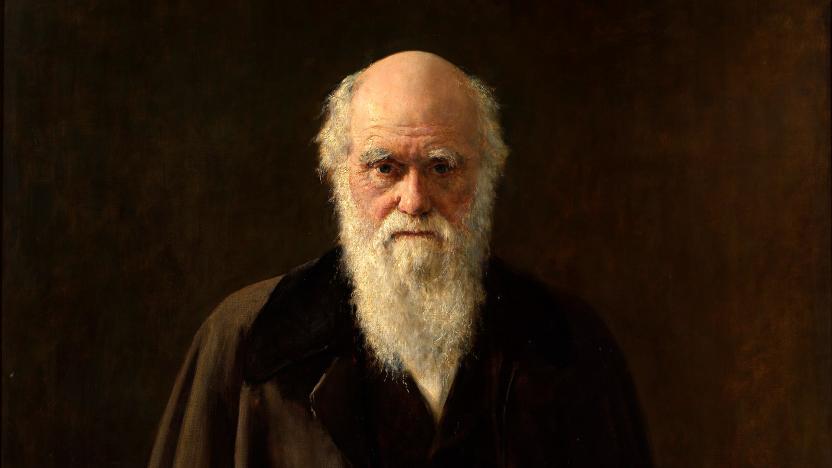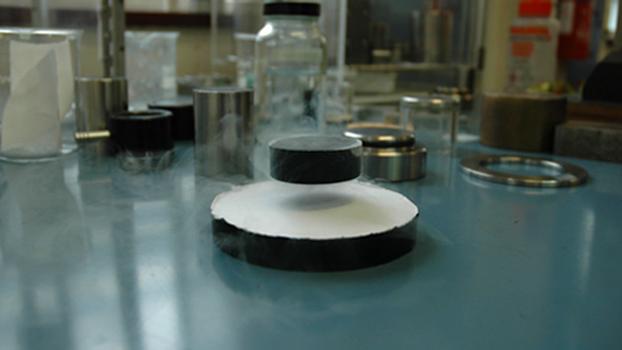University of Cambridge
Latest

Charles Darwin's full correspondence is now available online
Every surviving Charles Darwin letter is now available to read online.

UK police fail to use facial recognition ethically and legally, study finds
Use of live facial recognition (LFR) by UK police forces "fail[s] to meet the minimum ethical and legal standards," according to a study.

Microsoft and Ninja Theory are making games to fight mental illness
In 2015, Ninja Theory released Hellblade: Senua's Sacrifice, a journey through the mind of the Celtic warrior Senua as she faced anxiety, depression, hallucinations and delusions. The Microsoft-owned studio took careful steps to respect people suffering from those conditions, and it worked with Paul Fletcher, a professor at the University of Cambridge, to accurately portray mental illness. Beyond the award recognition, Ninja Theory and Fletcher were encouraged to keep going with their work around mental health. Today, they announced their next endeavor: The Insight Project.

Researchers can profile Facebook users to a 'T' with just their likes
Remember the time you liked a beer pong video on Facebook and thought nothing more of it? That may have said more about you than your friends and family ever knew, according to researchers at Cambridge and Stanford. They created a computer program that sifted through the Facebook likes of over 85,000 users to see if a person's preferences could rat out their true persona. The team used certain associations that seem fairly obvious; for instance, liking tattoos means you're more likely to drink alcohol. Others were more bizarre: apparently, people who like curly fries tend to be intelligent. Who knew?

Record-breaking magnet crams three tons of force into the size of a golf ball
University of Cambridge scientists have broken a decade-old superconducting record by packing a 17.6 Tesla magnetic field into a golf ball-sized hunk of crystal -- equivalent to about three tons of force. The team used high-temperature superconductors that work at minus 320 degrees F or so -- not exactly balmy, but less frigid than the minus 460 degrees F needed for regular superconductors. With zero resistance, superconducting materials can carry up to 100 times more current than copper wires, but the resulting magnetic fields create huge internal forces. Since the cuprate materials used for the record are as fragile as dried pasta, they can actually explode under the strain. To get around it, the team modified the material's microstructure and "shrink-wrapped" it in stainless steel. That produced the largest magnetic field ever trapped in a standalone material at any temperature, according to the team. The research might eventually lead to more secure and efficient power transmission, better scanners and yes, levitating monorails. [Image credit: University of Cambridge]

Phase change memory breakthrough could lead to gigahertz-plus data transfers, make SSDs seem pokey
Often considered the eventual successor to flash, phase change memory has had a tough time getting to the point where it would truly take over; when it takes longer to write data than conventional RAM, there's clearly a roadblock. The University of Cambridge has the potential cure through a constant-power trick that primes the needed hybrid of germanium, antimony and tellurium so that it crystalizes much faster, committing data to memory at an equally speedy rate. Sending a steady, weak electric field through the substance lets a write operation go through in just 500 picoseconds; that's 10 times faster than an earlier development without the antimony or continuous power. Researchers think it could lead to permanent storage that runs at refresh rates of a gigahertz or more. In other words, the kinds of responsiveness that would make solid-state drives break out in a sweat. Any practical use is still some distance off, although avid phase change memory producers like Micron are no doubt champing at the bit for any upgrade they can get.

Cambridge researchers translate graphene into printable circuitry material, bring basic 'Skynet' factory to you
Yes, graphene is amazing and possesses many useful / otherworldly properties. The ability to use graphene itself to print flexible, transparent thin-film transistors via an inkjet printer is just another one of them. Over at the University of Cambridge, researchers have discovered that it's possible to print standard CMOS transistors using a graphene component. Provided the graphene is chipped off a block of graphite using a chemical solvent and the larger (potentially print-head blocking) chips are removed, it can be turned into a polymer ink which can then run through a conventional inkjet printer. The potential result of this is flexible, transparent and wearable computer circuitry coming from ordinary printers as opposed to several multi-million-dollar machines in a factory, which has long been the historical standard. Besides, who wouldn't want to print their own circuitry on a PhotoSmart MFP rather than whatever report might be due the next day?

Cambridge researchers tout new location-based method to predict friends on social networks
Friend suggestions on social networks may already be a little too eerily accurate for some, but a team of researchers from Cambridge University now say they can do one better. They've devised a method that doesn't simply rely the usual friends-of-friends approach, but on where those people tend to hang out. According to researcher Salvatore Scellato, "it turns out that the properties of the places we interact can determine how likely we are to develop social ties," and that places like offices and gyms are better indications of potential friends than football stadiums or airports. That notion was borne out in their research (conducted over a period of four months using Gowalla), which found that "about 30 percent of all new social links appear among users that check-in to the same places." With the two prediction methods combined, the researchers say they're able to account for 66 percent of all new social ties. No word if they've moved onto predicting crimes next. [Image credit: Gowalla]

Device Analyzer Android study wants to track your every move, if you'll let it
And here we thought folks were concerned about protecting their personal data. As it turns out, however, a surprising chunk of Android users have volunteered to give a group of University of Cambridge researchers a look at exactly how they use their cellphones. By downloading the Device Analyzer app from the Android market, more than 1,000 participants have allowed the data collection program to harvest statistics in the background while they use their phones. Those statistics -- varying from when the power is switched on, to which apps are in use -- are then made available to users via the Device Analyzer website. Of course, this is Cambridge, a rather well respected institution of higher learning, and the researchers involved say the data collected is stripped of personal information "as best as possible," but we're not keen on anyone peeping our cell stats. If you're an Android exhibitionist, however, you can sign up for the study at the source link below.

Cambridge developing 'mind reading' computer interface with the countenance of Charles Babbage (video)
For years now, researchers have been exploring ways to create devices that understand the nonverbal cues that we take for granted in human-human interaction. One of the more interesting projects we've seen of late is led by Professor Peter Robinson at the Computer Laboratory at the University of Cambridge, who is working on what he calls "mind-reading machines," which can infer mental states of people from their body language. By analyzing faces, gestures, and tone of voice, it is hoped that machines could be made to be more helpful (hell, we'd settle for "less frustrating"). Peep the video after the break to see Robinson using a traditional (and annoying) satnav device, versus one that features both the Cambridge "mind-reading" interface and a humanoid head modeled on that of Charles Babbage. "The way that Charles and I can communicate," Robinson says, "shows us the future of how people will interact with machines." Next stop: uncanny valley!

A grand tour of nanotechnology at Nokia Research Center, Cambridge
We've all seen what a bumpy ride Nokia's had over the last few months -- disappointing profits, the departure of a couple of old friends, and the slight delay of the forthcoming N8. Despite all that, Espoo seems to have at least one stronghold that remained unshaken throughout the storm: its research center in Cambridge, UK. Yep, we're talking about the magical place where Nokia and University of Cambridge co-develop the core technologies for the futuristic Morph concept. Actually, "futuristic" might be too strong a word here, as we were fortunate enough to see some of Nokia's latest research at the heart of Morph -- namely flexible circuitry and nanowire sensing -- demonstrated live yesterday. Curious as to how well the demos went? Then read on -- you know you want to.%Gallery-103427%

Liquid crystal lasers will light up next-gen HDTVs, your life
If you thought Mitsubishi's LaserVue HDTVs were the beginning and the end of laser-tech in boob tubes, think again. Mitsu's line is carrying on, but the brightness and depth of color offered by that telly are apparently just the beginning of what's possible according to researchers at the Centre of Molecular Materials for Photonics and Electronics at the University of Cambridge. They indicate that the use of liquid crystals in concert with a single, laser-based light source would result in the same color depth but at a lower cost and higher reliability than the LaserVue, which requires separate lasers for RGB. What cost, exactly? That, dear reader, remains to be seen, but given the source we're thinking you have plenty of time to save up -- and to practice those Dr. Evil impressions. [Via OLED-Display]

Researchers tout co-op system for ubiquitous WiFi
There's already plenty of folks working to make WiFi as ubiquitous as possible, but a team of researchers at the University of Cambridge seem to think they've devised one of the most efficient solutions yet, although it's not without its share of hurdles. The basic idea is to turn a sometimes frowned upon activity into an acceptable one, by making it safe for individuals to share their home WiFi with neighbors and passers-by. To do that all-important latter bit, the researchers propose that the guests would only be given access to a "tunnel" to a single, trusted point on the internet (as illustrated above), with a firewall offering further protection. That, obviously, wouldn't work unless everyone (including the ISPs) played along, and the researchers some ideas about that as well, even including the possibility that municipalities pass laws requiring ISPs to support co-ops. In other words, don't bet on it showing up overnight. [Warning: PDF link][Via New Scientist]







